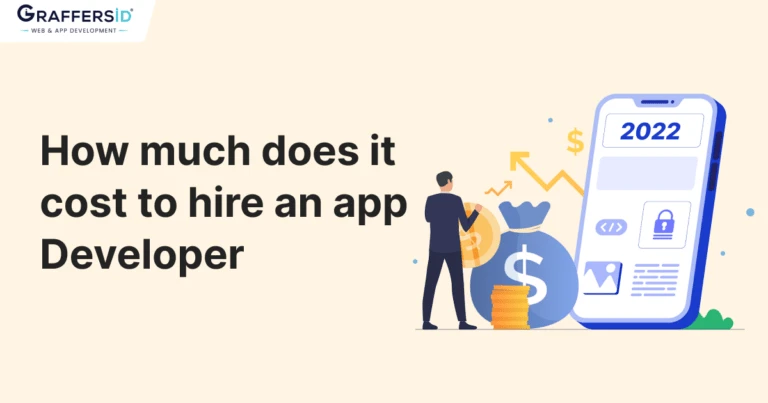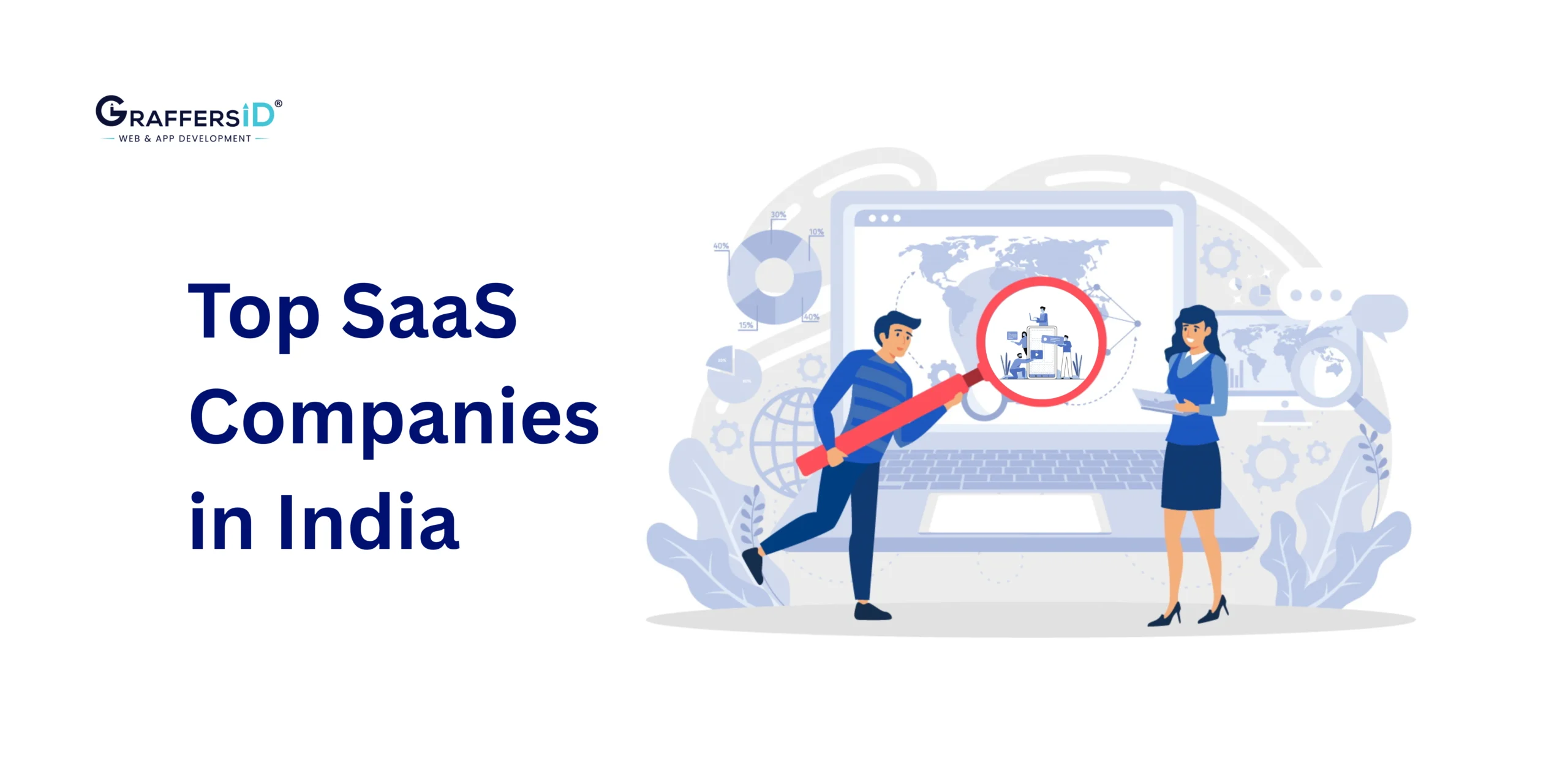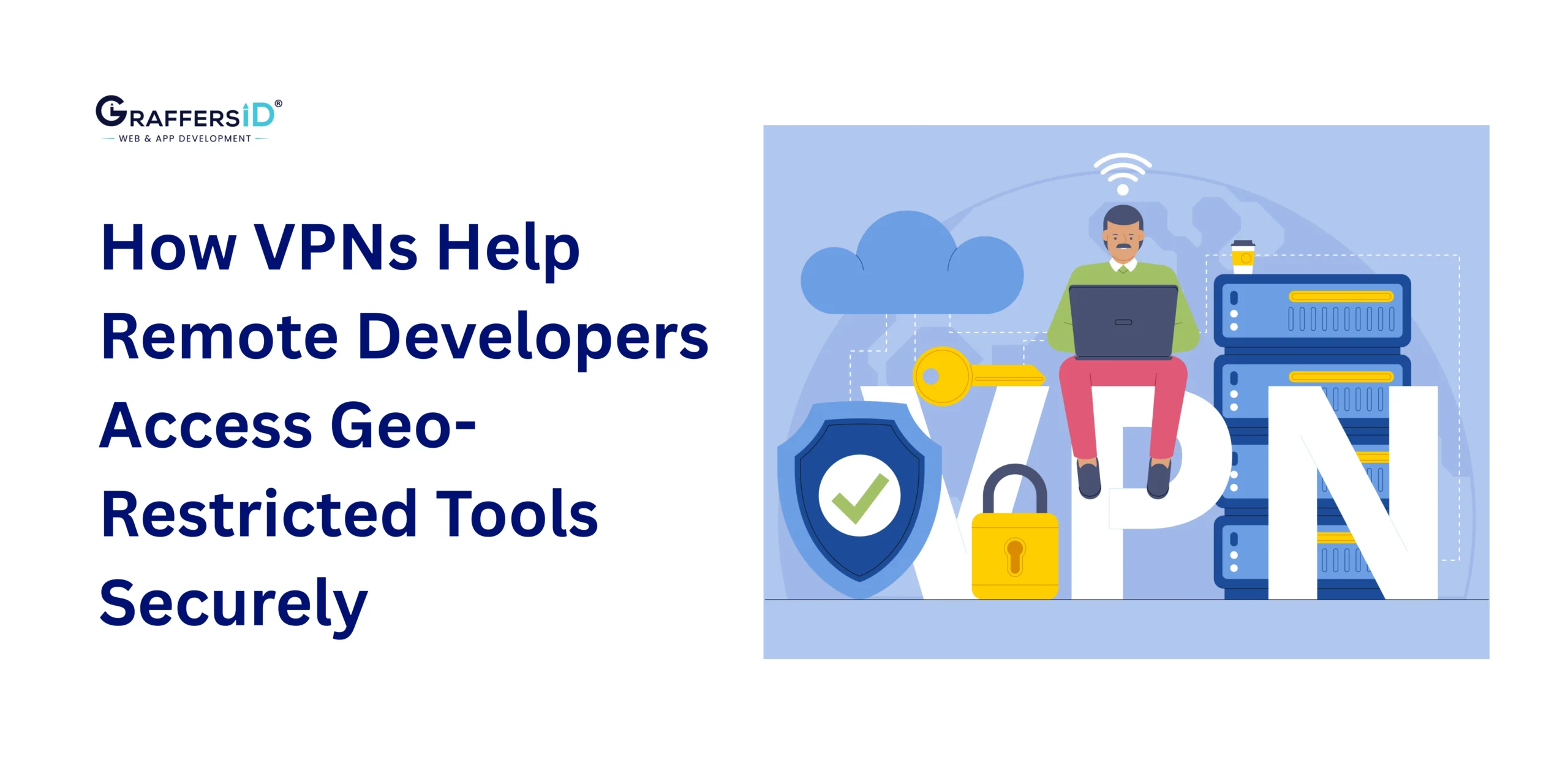According to research conducted by Statista, global mobile app sales reached 249.9 billion U.S. dollars in 2019-2027 and total revenue is expected to show an annual growth rate (CAGR 2022-2027) of 11.28%. Isn’t it awestruck? There are Millions of apps available on the app store as shown in the app store report by business of apps. Evidently, only a few out of a million survive, as they tend to stand out amongst the other apps. When developing a mobile application, the first question that pops up in the mind of any entrepreneur and business owner is the cost of developing a mobile application. It’s crucial to focus on estimating the app development cost which includes, the cost to hire an app developer, UI UX designer, project manager, and launch. So that you can uniformly distribute the budget for hiring the app developer, marketing, branding, and team acquisition.
We know it’s extremely important to focus on developing an interactive and intuitive Mobile app to stand out from the market and boost revenue. The average cost of an app developer for hire starts from $50 and can go up to $110.
Does this imply that a $110 developer is best for you? Or should we perhaps go with hiring in between, that is, $70 per hour?
There’s no straight answer to this question. It entirely depends on the company’s requirements and budget. What is extremely important is to have relevant market information to understand better and then hire vetted remote developers. This is exactly what is covered in the article.
This article will walk through how to find and hire dedicated app developers, factors influencing the cost of hiring developers, the cost of hiring developers for iOS, Android, and cross-platform, the cost of hiring freelancers, hiring agency and staff augmentation, and the cost of hiring developers in different locations.
3 Steps to Hire a Dedicated Android Developer?

Let’s say you have come across a great app idea and you’re neither a tech geek nor someone familiar with programming languages and the tech industry. To get the answer, you might end up searching on Google for who can develop an app for you or how to get this app idea executed. Also, you have discussed with your friends, family, and known people to get your mobile app developed.
Fortunately, when you search for this, google will suggest tons of results offering several app developers for hire across the globe, but the next question might be who to select and how to know that this developer is best for me.
You can get a plethora of app developers for hire with different skill sets, price ranges, and kinds.
Fortunately, there’s always a general thumb rule that you can consider when hiring app developers so that you don’t go wrong in any case.
Before you start with the quest to hire dedicated app developers, here are three general principles that you should consider:
1. The basics
The most important thing to remember is that if you don’t know enough about technology, it’s highly recommended that you learn some basics about technology, programming languages, target audiences, and platforms that you want to target for your app. Who would use your app, and how much would it cost to hire an app developer?
2. Go ahead with the experienced developers
You wouldn’t want to consult a doctor who’s straight out of a university with no experience of conducting surgery. You would want to consult an experienced doctor to conduct the surgery.
The same principle applies when hiring developers. Consider hiring developers with adequate skills and relevant experience, or you can ask for their portfolios of past work.
It’s not necessary to look for a top-notch developer if the cost of hiring is going over budget. Instead, you can also hire vetted remote developers who have decent experience and have a portfolio of their past work to show, or you can even ask for a few samples of their coding to get a glimpse of their past work.
3. Build a relationship with them
Hire reliable developers with whom you can have effective communication and build relationships to make your app go. It’s always wise to hire developers who share the same vision as the company. It becomes easy to communicate and eliminates all the communication barriers.
Here are 5 Advantages and Challenges of Hiring Remote Developers
How much does it cost to develop an app?
There are tons of factors that affect the cost of developing an app, such as the app’s functionality and purpose, integration points, mobile platforms, types of features and technology, integration of visual objects, maintenance plans, and many more.
However, in general, the cost of app development for simple apps starts at $40,000 and can extend up to $70,000 or more. For developing a medium-complex app, it starts from $70,000 and can extend up to $1,3000; for a complex app, it starts from $1,3000 and can go beyond.
Factors affecting the cost of hiring an app developer?

Various factors can affect the cost of hiring an app developer:
1. Qualifications
The qualifications and skills of a developer can affect the cost. It’s quite obvious to say that the higher the qualifications and skills, the higher the cost. If you’re looking to hire a full-stack developer, the chances are higher that the cost might be affected. Also, if you have a tight budget, you might need to hire accordingly.
2. Experience
The hourly rate of hiring an experienced developer will always be more than the hourly rate of developers who aren’t experienced or are freshers. It will eventually have a significant impact on the cost of hiring.
3. Geographical Location
Among other factors influencing the cost of hiring, location is one of the prime factors. Different geographical locations have different standards of living and labor market saturation.
For instance, hiring an app developer with 5 to 8 years of experience in the USA, Europe, UK is far more expensive than in other countries like India, China, Sri Lanka, and others.
High standards of living, less availability of resources, and several other reasons affect the cost of hiring developers in the USA.
4. Technology
Another significant factor that affects the cost is the technology stack. The IT market is vast and offers different programming languages and frameworks, making it more expensive.
The cost per hour is different for different technology stacks. The demand for programming languages highly affects the cost per hour. For instance, the demand for Python is high. The demand for developers highly experienced in Python would be high.
What is the cost of hiring an Android app developer, iOS app developer, and cross-platform app developer?
We cannot discuss the iOS vs Android debate when discussing mobile app development costs per hour. Should you go with iOS, Android, or a Cross-Platform solution for your company, and how does this affect the cost?
According to research conducted by Statcounter, the number of Android apps is greater than the number of iOS apps due to the ease of publishing and flexibility.
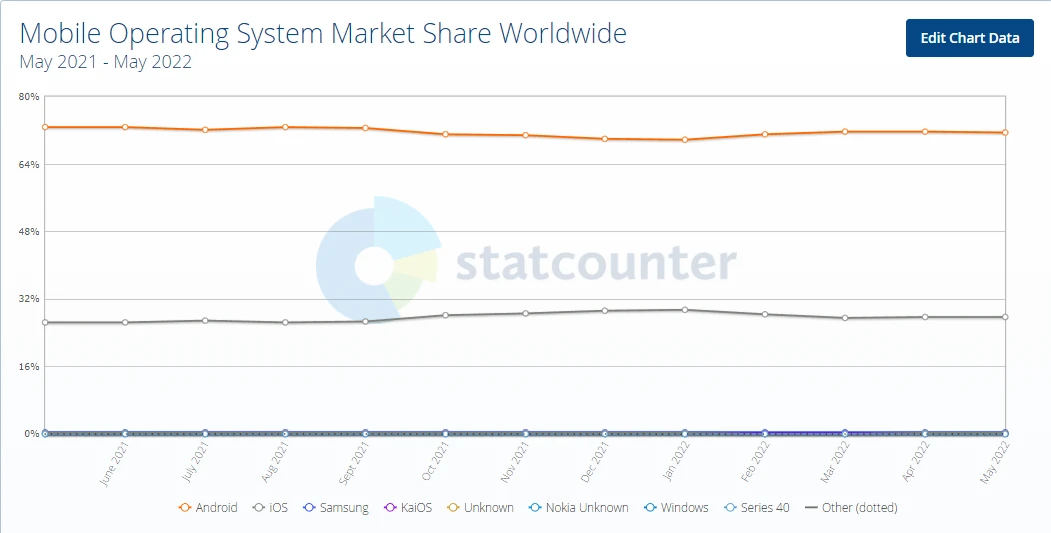
On the contrary, iOS apps have great UI/UX, performance, and are more popular in Western Europe and North America.
If you hire a developer for an Android app, you will have to pay more as it will take more time to develop, while if you hire a developer for the iOS platform, you will not have to pay more as the app can be developed in less time.
In addition, Android devices have different screen sizes and the programming language used to develop Android apps is Java, which is quite larger and more typical than Swift, which is used for developing apps on iOS platforms.
The time required to develop an app for the iOS platform isn’t much due to simplicity in coding and hence the cost for hiring developers per hour for the Android platform decreases.
As mentioned above, the cost of hiring does vary by location, technology stack, and market density.
The time required to develop an app for the iOS platform isn’t much due to the simplicity of coding and hence the cost of hiring a developer per hour for the Android platform decreases.
Let’s say, if you hire an iOS app developer from the US, the cost per hour charged by the developer would generally range between $50-$85, while if you hire the same from India, the cost of hiring the iOS developer per hour would be quite less, that is, $15-$30.
On the other hand, when it comes to hiring an Android developer, the cost increases due to the increase in hours. The developer hired in the US will cost around $70-$110, while in India it will cost from $20-$40 per hour.
If the cost per hour for Android and iOS developers is $90 and for cross-platform developers such as Flutter it is around $70-$120 in the US, then the cost per hour for cross-platform in India would range between $30 and $50.
Generally, the idea of launching an app on cross-platform apps is feasible when you want to target both iOS and Android audiences.
The estimated cost of hiring a freelancer, hiring agency, and staff augmentation company?
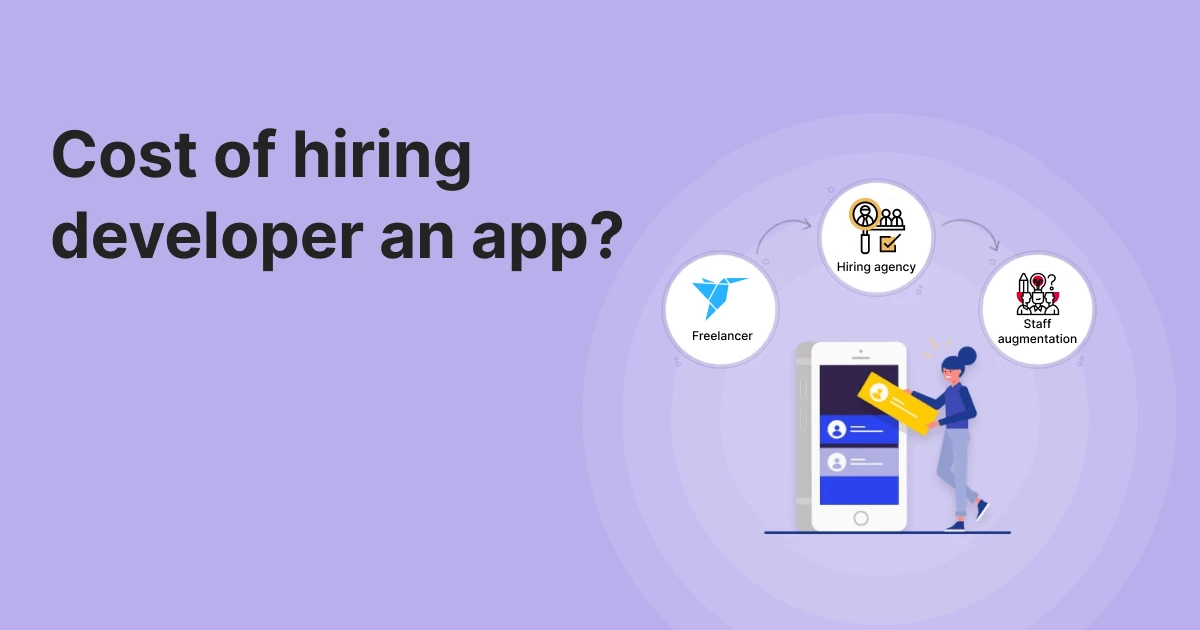
If you have a startup and want to hire developers, you can consider these three options.
1. Freelancer
If you’re tight on budget and are looking for affordable options to hire app developers, then hiring a freelancer is the best option.
The cost of hiring freelance developers in India starts at $15 and can extend up to $30.
However, when hiring a freelancer, there’s a lot more than seeing what it costs per hour. The overall hiring and recruitment process can get tedious. The entire hiring and recruitment process can end up costing more.
2. Hiring or Recruiting Agency
Hiring a recruiting agency is a safe bet when it comes to saving resources and time. When hiring a recruiting agency, you don’t have to do any leg work so you can easily devote time to other important tasks.
The recruitment agency will do everything from hiring the best candidates from the pool of teams to engaging in app development.
When hiring a recruitment agency, you will have to pay for the agency’s services on an hourly basis.
The only loophole in hiring recruiting agencies is that they might not have adequate technical expertise, which can be a drawback, especially if there’s no technical expert CEO.
3. Staff augmentation company
This model works well when you need services such as hiring and technical assistance. If you have a decent budget, you can easily hire a staff augmentation company to ease your work and provide hassle-free services.
Once you delegate the services to a reliable staff augmentation company, you will not have to put in any brain or do any leg work as you will get both technical assistance and a successful quest for developers.
The cost of working with an IT staff augmentation company varies based on the pricing policy.
If you’re looking for staff augmentation services, GraffersID offers staff augmentation services. We offer dedicated and vetted software developers who can provide the utmost high quality software development services to save you time and resources.
We have a pool of top-notch developers to make your web and app development dreams come true.
Estimated cost to an hire app developer based on different geographical locations?
It’s Needless to mention different geographical locations affect the development rates, which includes North America, Latin America, Europe, and Southeast Asia.
1. North America
The cost of hiring developers per hour in the US starts at $35-$70. The average cost of hiring on an hourly basis is $50. The cost of hiring developers per hour in Canada starts at $30-$60. The average cost of hiring on an hourly basis is $40. Undeniably, the cost of hiring developers in the US is quite expensive. On the other hand, Canada is a tad inexpensive.
2. Latin America
The cost of hiring developers per hour in Brazil starts at $20–$50. The average cost of hiring on an hourly basis is $40. The cost of hiring developers per hour in Argentina starts at $20-$50. The average cost of hiring on an hourly basis is $30. The cost of hiring app developers in Colombia ranges between $19 and $50 per hour. The average hourly rate is $30.
The cost of hiring app developers in Mexico ranges between $20 and $60 per hour. The average hourly rate is $35.
When it comes to hiring in Latin America, the cost of hiring developers isn’t quite as expensive. The hourly cost of hiring developers in Mexico is very close to the US.
3. Europe
The cost of hiring developers per hour in the UK starts at $30-$70 and the average cost of hiring app developer on an hourly basis is $40. In Ireland cost starts at $30-$60 and the average cost of hiring app developer on an hourly basis is $42.
In Germany the cost to hire an app developer is around $30-$60. The average cost of hiring on an hourly basis is $45.
In France cost to hire is around $30-$60. The average cost of hiring on an hourly basis is $35.
The cost of hiring app developers per hour in the Netherlands starts at $25-$60. The average cost of hiring on an hourly basis is $38.
The cost of hiring developers per hour in Switzerland starts from $38-$70. The average cost of hiring on an hourly basis goes $50.
When it comes to hiring developers on an hourly basis in Western Europe, Switzerland is a tad costly when compared to other countries in Europe.
4. South East Asia
The cost of hiring developers per hour in India starts at $10-$50. The average cost of hiring on an hourly basis is $20.
The cost of hiring developers per hour in the Philippines starts at $8–$40. The average cost of hiring on an hourly basis is $20.
The cost of hiring developers per hour in Bangladesh starts at $7–$40. The average cost of hiring on an hourly basis is $20.
The cost of hiring developers per hour in Vietnam starts at $10–$40. The average cost of hiring on an hourly basis is $25.
The cost of hiring developers per hour in Singapore starts at $30-$60. The average cost of hiring on an hourly basis is $40.
Southeast Asia has the lowest cost of hiring app developers in the world. In India, GraffersID is one such leading company that is renowned for providing top-notch dedicated developers for app and web development. The cost of hiring developers is $15 per hour.
App Developer Rates for 2024
As technology continues its relentless march forward, businesses must keep pace to stay relevant and competitive. A key way many companies are leveraging tech is through custom mobile apps, which can provide new revenue streams, better customer engagement, valuable data insights, and more. However, top-notch app development doesn’t come cheap – especially as demand grows while the talent pool struggles to keep up. So what will it cost to build an innovative app in 2024? Let’s break down the numbers.
The Project Scope Spectrum
All apps are not equal when it comes to complexity and thus development costs. A simple app with basic functionality like a company brochure app might only require 100-200 hours to create, while complex apps like social networks or on-demand services can require thousands of hours. When estimating costs, look at the complete scope of features, integrations, security, QA testing, ongoing maintenance, and more. Here’s a quick comparison:
- Simple Apps: $10,000-$30,000
- Medium Complexity Apps: $50,000-$150,000
- Highly Complex Apps: $100,000+
The Developer Dilemma
As technology explodes, demand for skilled developers grows rapidly while supply sputters. Top app developers are very much in demand, and they know it – allowing them to command impressive hourly rates. Depending on experience level and specialty, app developers can charge anywhere from around $50/hour on the low end to over $250/hour on the high end. The typical range is $100-$150 per hour. At those rates, it’s easy to see how 100 hours quickly becomes $10,000-$15,000 for your project.
Outsourcing Sticker Shock
Many companies turn to overseas talent to reduce project costs, but outsourcing app development to firms in India, Eastern Europe, and elsewhere presents some surprising budget curveballs. Yes, their per-hour programmer rates are much lower – often around $30-$50/hour. But total costs frequently end up similar to quality U.S. firms due to challenges like:
- Communication barriers increase project duration
- Much more planning & scoping time required
- Extensive QA testing to ensure quality
- Complex integrations are more difficult
- Less customization flexibility mid-project
When you add up all the hours, outsourced apps can end up costing the same overall – or sometimes even more. This is why more businesses are turning back to capable U.S. developers. Yes, you’ll pay more per hour, but likely invest fewer hours.
The Outlook for 2024 and Beyond
Given the widening developer talent gap and continued high demand for new and updated apps, pricing will likely climb higher as we look ahead to 2024 and beyond. Top app developers at leading U.S. firms will potentially command $175-$275+ per hour for their services. At those rates, even simple app projects approach $30,000-$50,000+ in costs.
Of course, the innovation possibilities unlocked by a well-designed app paying dividends across an organization makes the investment worthwhile. Yet businesses must factor in these rising price points as they budget for app projects in 2024-2025 and plan for a mobile-centric future. With careful scoping, local talent leveraging, QA priority and post-launch upkeep, they can maximize their return on investment in custom mobile apps.
The bottom line is that creativity, innovation, and convenience carry a cost. As apps become deeply ingrained across industries, they will become more and more crucial – and expensive. Armed with realistic budget awareness through 2024, businesses can forge ahead with app development, even if the price tag is higher than ever.
Choosing the Right App Developer: Cost Considerations in 2024
As businesses plan their app development initiatives for 2024 and beyond, one of the most pressing questions is budget. How much will it cost to build that slick custom mobile app that takes your brand to the next level? With consumer App Store spending projected to rise to $270 billion by 2025, you don’t want to cut corners. But you also need your investment to pay tangible dividends across your organization.
Navigating the process of identifying the right partner while keeping budgets in check can be challenging. Here are three tips to help choose a top-quality app developer at a 2024 price point your business can afford.
Lock Down Project Scope First
The #1 budget buster is the lack of detailed scope combined with expanding feature creep over the development process. You can’t get an accurate app cost estimate without defining the parameters first. Document every feature, functionality element, security measure, integration with existing software, QA testing needs and post-launch maintenance requirements. Underscore “must-haves” versus “nice-to-haves.” Hand this to developers for bid assessment.
Ask for Hourly Rates & Time Estimates
Reputable app developers price projects based on hourly rates for roles (e.g. Project Manager, Developers, QA Testers, etc) times estimated hours matching the scoped requirements. Request this breakdown from bids versus just a total lump cost. This allows you to assess variances and average hourly rates to determine fair overall pricing. Target around $125/hour for a capable U.S. developer blending seniority levels.
Compare More Than Just Dollars Per Hour
Hourly app developer rates certainly impact overall costs, but should not be the only factor. A firm with senior-heavy teams at $175 per hour but narrower time estimates due to efficiency may actually cost less overall than junior-heavy teams at $75 per hour taking significantly longer. Assess their experience, talent bench depth, communication skills, design creativity, reliability and scope alignment – not justStrict per hour pricing.
Bonus Consideration: Post-Launch Maintenance
Don’t overlook ongoing app maintenance needs as projects launch. Factoring in retainer coverage for updates, integration modification, security patches, bug fixes, feature additions and version upgrades is crucial. New user feedback sparks much app evolution. Try to quantify monthly and annual maintenance hours in initial contract scopes to prevent surprise add-ons later stretching limited budgets.
Choosing the right app developer ally for your 2024 mobile initiatives involves many variables around fit, capabilities and capacity to deliver within defined parameters. While hourly rates and per-project costs are key budget decision points, take a holistic view inclusive of experience, communication pave and post-launch coverage as well. Quantify required hours against features, and vet realistically blended rates based on roles, but don’t make price the only determinant. With thoughtful partnerships aligned on scope, the risk of budget overages is reduced even when innovation demands outpace resource availability overall in the app development talent pool.
Are There Different Pricing Models For Hiring App Developers?
Fixed Price:
In this model, the developer and the client agree upon a fixed price for the entire project. This is suitable when the project requirements are well-defined and unlikely to change significantly. However, any changes or additions to the project scope might lead to extra charges.
Time and Materials (Hourly Rate):
In this model, the developer charges based on the time they spend working on the project. Clients are billed for the actual hours worked, and this model is flexible for projects with evolving requirements. However, it might be difficult to estimate the final cost upfront, and there’s potential for the project to take longer than anticipated.
Dedicated Developer (Monthly Rate):
With this model, you hire a developer on a monthly basis. They work exclusively on your project during this period. This is suitable for long-term projects or when you need ongoing development, maintenance, or support.
Retainer Model:
Similar to the dedicated developer model, a retainer model involves hiring developers on a monthly basis. However, instead of a single developer, you might have access to a team with various skillsets. This is useful for projects that require a diverse range of expertise.
Project-Based with Milestones:
In this model, the project is divided into milestones, and the payment is tied to the successful completion of each milestone. This helps in tracking progress and ensuring that the project is on the right track.
Equity or Revenue Sharing:
Instead of paying upfront fees, some developers might agree to work for a share of the app’s future revenue or equity in the company. This is more common in startups where cash flow might be limited.
Hybrid Models:
Sometimes, a combination of different pricing models might be used to cater to various project aspects. For example, an initial phase might be on a fixed price, followed by ongoing maintenance on a retainer basis.
When choosing a pricing model, consider factors like project complexity, scope changes, timeline, budget, and your level of involvement. It’s important to have a clear contract or agreement outlining the chosen model, payment terms, and any potential extra charges or scope adjustments.
Types of App Developers
When looking to hire an app developer, you have several options:
1. Freelancers
Freelancers are individual developers who work independently. They can be a cost-effective choice for smaller projects but may lack the resources for larger, more complex apps.
2. Development Agencies
Development agencies are companies that specialize in app development. They offer a team of professionals with expertise in various aspects of app creation. This option is suitable for businesses seeking comprehensive solutions.
3. Contract-Based Remote Developers
Contract-based remote developers are experienced professionals who work remotely on a project basis. They provide flexibility and expertise without the need for a full-time commitment.
4. In-House Developers
Large enterprises may choose to hire in-house developers, creating a dedicated team to work on their app projects. While this offers more control, it can be the most expensive option due to salaries and overhead.
Understanding the Factors Influencing App Development Costs
Before we dive into the specifics of app development costs, it’s essential to grasp the various factors that can influence the final price tag. Here are some key elements to consider:
1. App Complexity
The complexity of your app is perhaps the most significant factor affecting the cost. Simple apps with basic features will cost less than complex, feature-rich ones. When planning your app, outline the features you need and prioritize them to stay within budget.
2. Platform Selection
Deciding whether to develop your app for iOS, Android, or both can significantly impact costs. Developing for multiple platforms generally costs more than focusing on a single platform initially.
3. App Design
An appealing and user-friendly design is essential for any app’s success. Investing in a high-quality app design can increase development costs but also enhance user engagement.
4. Development Team
The expertise and location of the development team you choose will affect costs. Hiring a seasoned team may cost more upfront but can result in a smoother development process and a better-quality app.
5. Maintenance and Updates
Remember that app development isn’t a one-time expense. You’ll need to budget for ongoing maintenance and updates to keep your app running smoothly and up-to-date with the latest technology.
Average Costs of Hiring an App Developer
Now that you have a better understanding of the factors influencing app development costs and the types of app developers available, let’s delve into some average cost estimates:
- Freelancers: Hiring a freelance app developer can cost anywhere from $20 to $150 per hour, depending on their experience and location. For a basic app, you might spend between $5,000 and $25,000. More complex apps could range from $25,000 to $100,000 or more.
- Development Agencies: Agencies often charge a fixed price for app development, which can range from $25,000 to $250,000 or more, depending on the complexity of the project.
- Contract-Based Remote Developers: Contract-based remote developers typically charge on a project basis, and their fees can vary widely based on experience and project complexity. However, they often offer a cost-effective option compared to hiring in-house.
- In-House Developers: The cost of in-house developers includes salaries, benefits, and overhead, making it the most expensive option. A medium-sized project could cost anywhere from $100,000 to $1 million or more.
It’s important to note that these are general estimates, and the actual cost of your app project may vary based on your specific requirements and location.
How does the complexity of the app affect the hiring cost for a developer?
The complexity of an app can have a significant impact on the hiring cost for a developer. Generally, the more complex an app is, the higher the skill level and expertise required from the developer, which can influence the cost in several ways:
Skill Level:
Complex apps often require developers with a higher skill level and experience in handling intricate architectures, algorithms, and technologies. Developers with advanced knowledge are typically in higher demand and command higher salaries.
Time and Effort:
Developing complex apps takes more time and effort due to the need for in-depth planning, architecture design, and implementation. This increased workload can lead to higher development costs.
Specialized Expertise:
Complexity might demand specialized expertise in areas like security, scalability, performance optimization, and integrations with various third-party services. Developers with these specialized skills can charge higher rates.
Team Size:
Complex apps might require a larger team of developers, designers, testers, and project managers. The more team members involved, the higher the overall cost.
Problem Solving:
Complex apps often come with unique challenges and technical hurdles. Developers capable of creatively solving these challenges tend to be more valuable and may command higher compensation.
Maintenance and Updates:
Maintaining and updating complex apps can be more intricate, requiring ongoing work post-launch. This ongoing commitment can affect the overall cost, as developers may charge for continued support.
Risk and Responsibility:
Complexity can increase the risk associated with development. Developers who are taking on more risk might expect higher compensation for their work.
Market Demand:
In some cases, the complexity of an app could correlate with the demand for skilled developers in that specific domain. Higher demand for developers in a particular niche can drive up their rates.
It’s important to note that hiring costs can vary based on factors beyond complexity, such as the developer’s location, reputation, and the competitive landscape in the job market. When estimating hiring costs, it’s recommended to consider both the app’s complexity and the level of expertise required to ensure the development process goes smoothly and meets your expectations.
Conclusion
A mobile app is a must-have for any business in 2024, so if you’re thinking about developing one, we strongly advise you to consider all the necessary parameters before hiring the developers.
Hire Android App Developers in India Now!
Ready to turn your app idea into reality? Our skilled Android app developers in India are here to make it happen! Say goodbye to the hassle and hello to expertise. We specialize in creating user-friendly apps that stand out. Whether you’re starting fresh or need an upgrade, our dedicated team is all set to bring your vision to life. Don’t miss out—hire our talented Android developers in India today for a seamless and successful app development journey!
